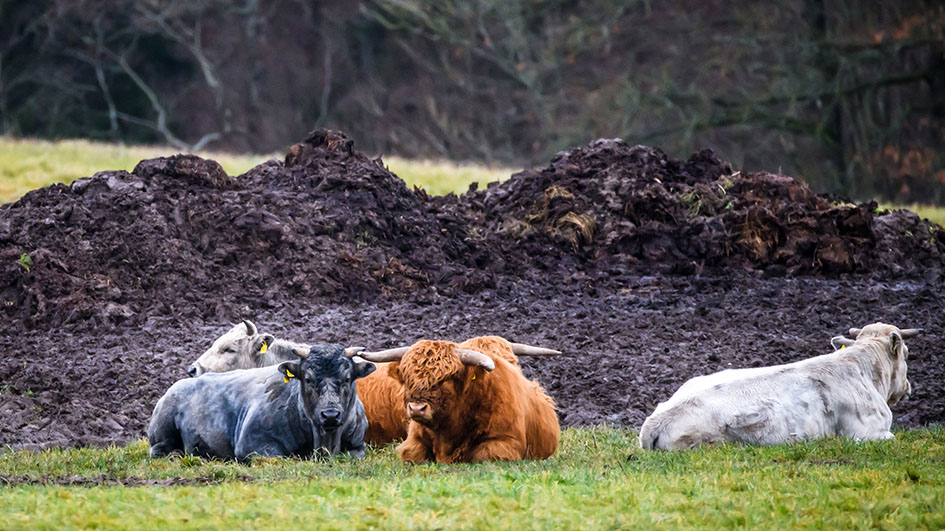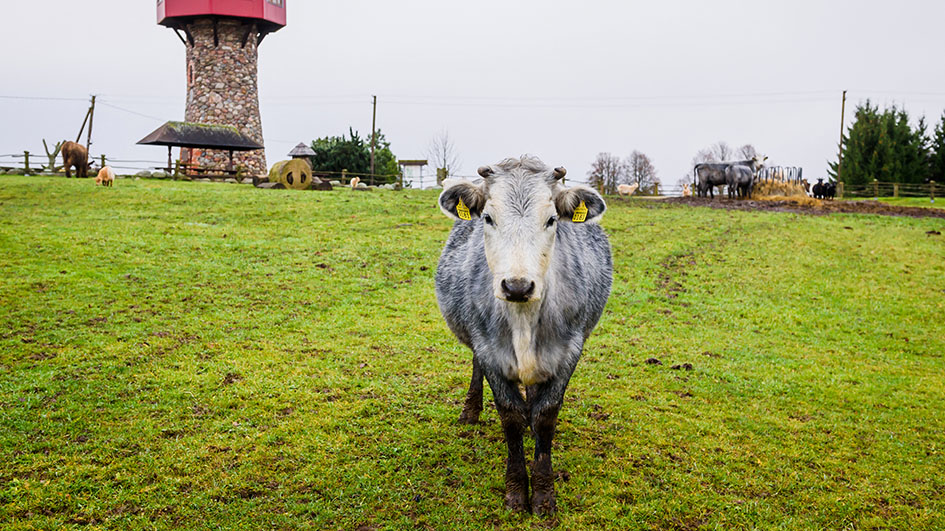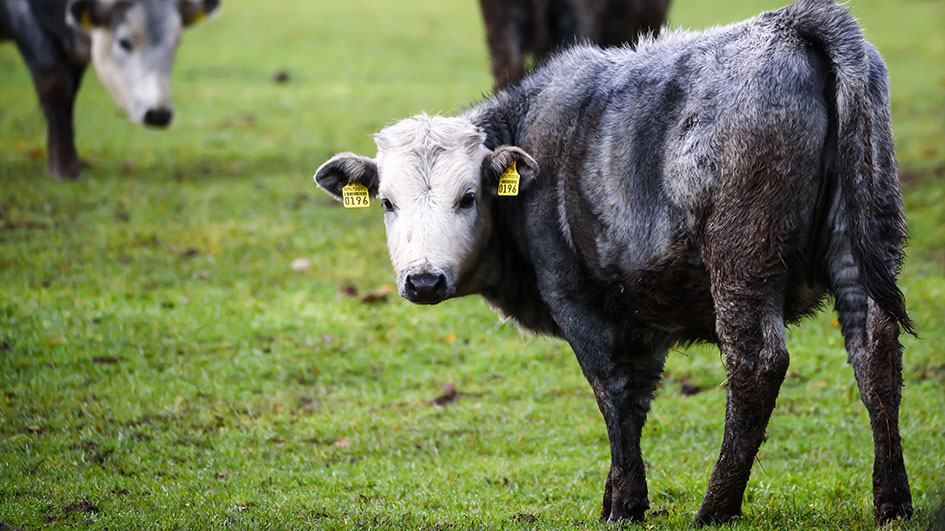Walking through the fields in Latvia, a lucky observer might catch a glimpse of a rare phenomenon: the uniquely hued Latvian blue cow.
The breed, which gets its name from its peculiar greyish-blue skin and fur, had been brought to the brink of extinction during the Soviet era, but has made a surprising comeback during the past few decades in Latvia, where the animal is a symbol of national identity.

A Latvian blue cow rests next to Highland cows in a pasture at Riga Zoo's affiliate Ciruli in Kalvene, Latvia. /Gints Ivuskans/AFP
A Latvian blue cow rests next to Highland cows in a pasture at Riga Zoo's affiliate Ciruli in Kalvene, Latvia. /Gints Ivuskans/AFP
The number of blue cows in the country was down to 18 in 2000, but it's now back to 1,500 animals.
"Their worst days are over," Arnis Bergmanis, head of the Ciruli animal park in the village of Kalvene, Latvia, told AFP. His animal center serves as a breeding facility for the special cattle.
"Blue cows are unique and wonderful. I'm glad we can help them thrive," he added, while examining a calf.
Bergmanis is also helping farmers from other countries, mostly in central Europe, to breed blue cows in their areas. The animal has become a tourist attraction but it's also kept by farmers for its strong maternal instincts.
"If a calf of any color loses its mother or gets separated, the blue cow will take the calf and raise it as its own," Bergmanis told AFP.
READ MORE
UK hit by bird flu outbreak
What you need to know about Lateral Flow Tests
Top stories in China during 2021

A Latvian blue cow grazes on a pasture at Riga Zoo's affiliate Ciruli in Kalvene, Latvia. /Gints Ivuskans/AFP
A Latvian blue cow grazes on a pasture at Riga Zoo's affiliate Ciruli in Kalvene, Latvia. /Gints Ivuskans/AFP
Where do blue cows get their color?
A legend behind the origin of blue cows says they get their color from the Baltic sea, being part of the herd belonging to an ancient sea goddess who used to come on to land with her cattle whenever the moon appeared in the sky.
According to the story, one of the sea-cows got lost and stayed on land, giving birth to the blue cow breed.
But in reality, blue cows are born as beige-colored calves, with their skin reaching their typical blue hue only years later.
The peculiar pigmentation is part of a natural mutation and it's not the only factor that distinguishes blue cows from all other breeds. The Latvian blue cow is considered a very hardy breed, resistant to harsh weather conditions and low temperatures, which allows it to live outdoors all year round.
But the breed provides less milk than the average cow, though it's said to be more nutritious.

A Latvian blue calf grazes on a pasture at Riga Zoo's affiliate Ciruli in Kalvene, Latvia. /Gints Ivuskans/AFP
A Latvian blue calf grazes on a pasture at Riga Zoo's affiliate Ciruli in Kalvene, Latvia. /Gints Ivuskans/AFP
How theater saved the blue cow
Because of the blue cow's low productivity in terms of milk and and meat production, during the Soviet era it almost went extinct as the regime favored other breeds that produced a higher yield.
The unexpected return of the blue cow is due to an unlikely savior: the theater.
A popular 1970s play by Latvian playwright Gunars Priede fittingly titled The Blue One turned blue cows into a symbol of the vanishing Latvian national identity – and stirred people into action to bring back the breed.
In 2006, farmers, scientists and blue cow enthusiasts founded the Blue Cow Association to safeguard the breed. The Latvian government also offers special subsidies for owners of blue cows.
Cover image: Gints Ivuskans/AFP
Source(s): AFP

